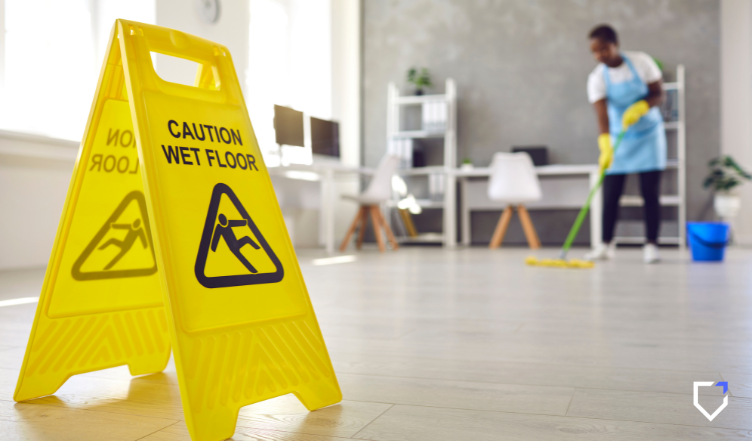In 2020, 805 workers died from falls and 211,640 suffered from injuries that required days off of work. These startling statistics from the National Safety Council clearly exhibit that slips, trips and falls are serious workplace hazards.
A Common and Costly Workplace Incident
Across all industries, slips, trips and falls were the third leading cause of workplace injuries resulting in days away from work in 2020. And injured workers missed an average of 16 days of work after a workplace fall.

Slips, trips and falls not only put employee safety at risk, but they also have a financial impact on employers, ranging from a general inconvenience to a serious liability.
- The 2022 Liberty Mutual Workplace Safety Index reports that slips, trips and falls accounted for over 30 percent of the $58 billion total cost burden to businesses for workplace injuries and illnesses
- The National Council on Compensation Insurance revealed slip and fall injuries were the third most costly lost-time workers’ compensation claim, averaging $48,575 per claim filed in 2019 and 2020.
In addition to the cost of the injury, slip and fall incidents can result in lost productivity when injured workers are off the clock, and higher insurance and operations costs for employers.
Workplace Falls are 100% Preventable
While workers in construction, transportation, warehousing and agriculture are at particularly high risk of workplace falls, they can happen anywhere – even at desk jobs. Wet floors, uneven surfaces and wobbly ladders are common causes of workplace slips and falls, which can happen from working at heights as well as on the same level.
Injuries can occur when an employee:
- catches him/herself from falling due to a slip or trip
- falls onto or against an object on the same level
- falls from a collapsing structure, through surfaces, and from ladders, roofs, scaffolding, or other structures
- jumps to a lower level
Despite the wide-ranging causes, slips and falls are one of the most preventable accidents to occur in the workplace. To protect employees and prevent losses, employers should create a safety program that focuses on slip and fall prevention and addresses what to do if someone gets injured.
Slip and Fall Injury Prevention
While slips, trips and falls make up the majority of general industry accidents, businesses can manage this risk and protect their employees by following these steps.
STEP 1: Determining what commonly causes falls in the workplace is the first step in a fall prevention program. Performing a daily safety survey can help employers to identify common causes of slips and falls. Some typical hazards to look for include:
- Unsafe conditions: wet or greasy floors, loose or torn flooring or carpets, and uneven outdoor surfaces like sidewalks and parking lots
- Risky employee behaviors: rushing, not paying attention/being distracted, using a cell phone, and carrying materials that obstruct vision
- Damaged or improper equipment: damaged ladder steps and broken/missing handrails
- Hazardous environments: inclement weather with ice, rain or snow, poor lighting, and clutter
STEP 2: The next step is to take immediate corrective action and implement protection measures to eliminate hazards and safeguard against falls. This might include:
- workplace maintenance,
- equipment repairs or replacement,
- and safety training and signage.
Employers should develop and implement a written safety program that provides employees with regular training in slip and fall safety. Training should include procedures for how employees report unsafe conditions and respond to injuries or hazards. Offering incentives for safe behavior can help encourage program participation and compliance.
STEP 3: Finally, it’s important for employers to document any safety measures and protection efforts taken, including daily safety inspection and maintenance work records. When slip and fall incidents do occur, they should be investigated to determine the cause and all responses should be documented. This helps protect employers in the event of a claim while also improving workplace safety and growing the safety culture.
By taking these three steps to prevent avoidable workplace slips, trips and falls, employers can protect their employees, preserve company productivity and avoid the costly financial impact of slip and fall workers’ compensation claims.
